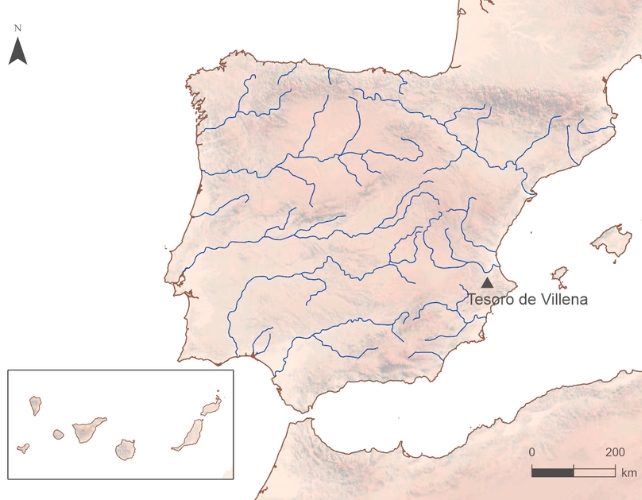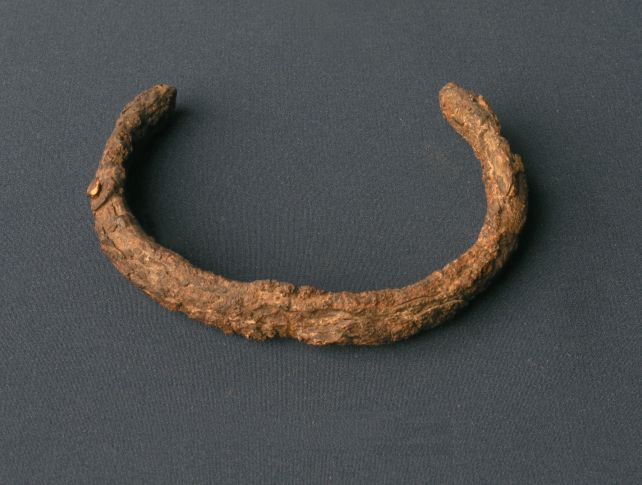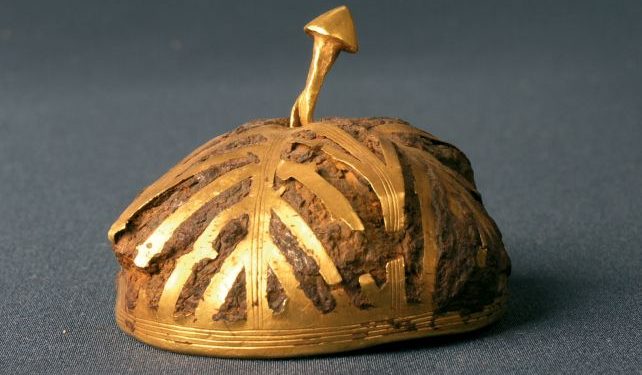In the middle of a cache of sparkling golden treasures of the Iberian Bronze Age, a pair of corroded objects could be the most precious of all.
A dull bracelet and a rusty hollow hemisphere decorated with gold are forged, have found researchers, not from metal under the ground, but with iron meteorites falling from the sky.
The discovery, directed by the conservation chief now retired at the National Archaeological Museum, Spain, Salvador Rovira-Llorens, was revealed in a paper Last year, and suggests that technology and metal work techniques in Iberia over 3000 years ago were much more advanced than we thought.
Villena’s treasure, like the cache 66 Mainly gold objects is known, was discovered over 60 years ago in 1963 in what is now Alicante in Spain, and has since become one of the most important examples of Bronze Age in the Iberian Peninsula and all of Europe.

However, the determination of the age of the collection was somewhat difficult to make, thanks to two objects: a small hollow hemisphere, considered as part of a scepter or a sword; And a single Torc type bracelet. The two have what archaeologists have described as a “ferrous” appearance-that is to say that they seem to be made of iron.
In the Iberian Peninsula, the Iron Age – where the melted earth began began to replace bronze – only started around 850 BCE. The problem is that gold materials were dated between 1500 and 1200 BCE. So determine where the artifacts of ferrous appearance are in the context of the Villena treasure was something of a puzzle.

But the iron ore of the Earth’s crust is not the only source of malleable iron. There are a number of pre-fer iron artefacts around the world that have been forged by meteorite fabrics. Maybe the most famous is the Pharaoh Tutankhamon meteoritic iron stabbingBut there is Other bronze age weapons makes equipment, and They were very appreciated.
There is a way to make a difference: meteorite iron has a much higher nickel content than iron has dug from the ground. The researchers therefore obtained permission from the municipal archaeological museum of Villena, which houses the collection, to carefully test the two artefacts and determine the amount of nickel they contained.

They carefully removed samples from the two artifacts and subjected the material to mass spectrometry to determine their composition. Despite the high degree of corrosion, which changes the elementary composition of the artifact, the results strongly suggest that the hemisphere and the bracelet have been made from meteoritic iron.
This carefully solves the dilemma in the way the two artifacts align with the rest of the collection: they were manufactured during the same period, dating back to around 1400 to 1200 BCE.
“The available data suggest that the Capuchon and the Villena Treasury bracelet would currently be the first two pieces attributable to meteoritic iron in the Iberian Peninsula”. Researchers explain in their article“What is compatible with a late bronze chronology, before the start of the generalized land production.”
Now, because objects are so seriously corroded, the results are not conclusive. But there are more recent and non -invasive techniques that could be applied to objects to obtain a more detailed set of data that would help cement the results, suggests the team.
The results were published in PREHISTORIA TRABAJOS.
A previous version of this article was published in February 2024.


